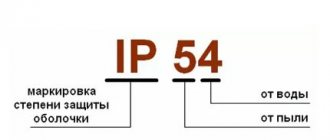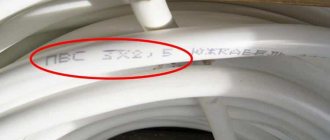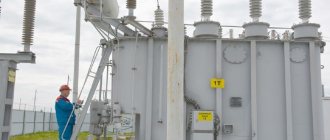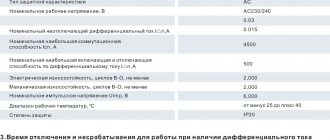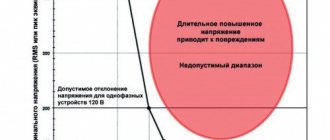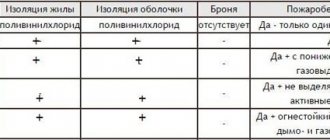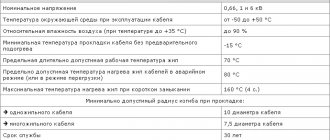We tell you what the IP68 standard is and what it affects.
Many modern phones have IP68 protection. Manufacturers claim that this technology allows you to avoid damage during active use of smartphones. Typically, for this purpose, the device body is covered with a durable plastic shell with rubber inserts that soften shocks. There are also special plugs to prevent moisture from entering.
Let's try to understand the IP68 standard and find out what impacts a phone with this type of protection can withstand.
IP68 what is it?
Not long ago, water resistance was a prominent feature of ultra-resistant
phones designed for professionals or those who spend part of their lives in adverse weather conditions. However, over the years, more and more manufacturers have decided to offer IP68 water resistance to their top phones.
In most cases, water and dust resistance is measured through IP certification, with IP68 being the highest resistance level we've ever seen on a smartphone, smartwatch, and other products. But what does IP68 mean for a phone? And above all, what tests are carried out to determine the level of protection of each device?
Degrees of IP protection › Table
It is convenient when the degrees of protection of electrical equipment ip are summarized in tables. Below are three tables for IP decryption protection. They comply with GOST 14254 - 2015.
Table of degrees of IP protection from access to dangerous parts , indicated by the first digit of the index
IP protection table (first digit)
Table of the degree of protection of electrical equipment IP from water (second digit)
In addition to the first two digits, the protection degree marking may contain two letters. The one that comes first after two numbers is called additional, and there may also be a letter with auxiliary information. The additional letter indicates the level of human protection from access to dangerous parts.
When a person touches electrical equipment, the following types of protection are distinguished:
- “A” - with the back of the hand;
- “B” - fingers;
- “C” - hand tool;
- "D" - single conductors.
The first number after IP and the additional letter in the marking have different meanings. The number indicates the protection of the housing from the negative influence of a person or any objects, and the additional letter indicates the protection of a person from the negative influence of elements of the electrical equipment itself.
For example, the first number “3” indicates the protection of the housing from hand-held tools, that is, the equipment will not be damaged when exposed to hand-held tools. The additional letter “C” certifies that personnel will be protected from the influence of unfavorable factors, namely electric shock, if the shell is exposed to hand tools.
The second letter of the protection category marking after the numbers displays auxiliary information.
- "H" - high voltage equipment,
- “M” - the test was carried out while moving,
- “S” - the test was carried out in a stationary (motionless) state.
"M" and "S" are usually used for equipment with moving parts.
Samples of protection degree markings with additional and/or auxiliary letters - IP 20C, IP 67S, IP 55DS.
Additionally, instead of numbers, there are “X” symbols. This symbol means that protection from foreign objects or water is not standardized for these components of the electrical product. Marking examples – IP X5, IP 1X, IP XX.
In addition, the product may be marked with not one, but several degrees of protection. Multiple degrees of protection are noted if it is necessary to indicate protection simultaneously from several negative influences, and the latter correspond to different degrees when classifying protections. For example, the product is protected from the effects of low water flow and short-term immersion in liquid. Under such conditions, the following marking can be given - IP 65 / IP 67.
What does IP68 mean and how is it certified?
IP protection rating is a standard by the International Electrotechnical Commission, or IEC, that establishes a classification system for degrees of protection in electronic devices and equipment.
The IEC's main goal in creating this system is to offer the user an accurate reference when it comes to understanding how robust their device is, thereby preventing manufacturers from using imprecise terms to indicate the level of protection of their devices.
Read: The best inexpensive smartphones
Therefore, depending on how well—or poorly—a device is isolated from solids or liquids, it receives a certificate appropriate to its level.
Certifications are established using codes with the structure "IPXX", where the first digit refers to protection against solid particles and the second refers to resistance to liquids. In the decryption you can see what each of the numbers means in the degree of IP protection.
Description of IP53 rating
For example, HTC 10 and Google Pixel smartphones have this marking. IP53 protection means that:
- If you drop your smartphone on sand and dust particles get into its body, it will not be damaged;
- The device is protected from dust and solid particles, as well as from splashes of water without pressure when the smartphone is tilted up to 60 degrees. However, the phone should be protected from moisture when left outside for a long time during heavy rain, as the IPX3 test guarantees protection for 10 minutes when splashed with liquid;
- An accidentally spilled glass of water will not damage the device. You just need to turn off the phone, air dry it, and only then turn it on.
Protection against solid bodies - IPX:
- X - No available or uncertified data
- 0 — Without protection
- 1 – Effective against particulate matter less than 50 millimeters
- 2 – Effective against particulate matter less than 12.5 mm
- 3 – Effective against particulate matter less than 2.5 mm
- 4 – Effective against particulate matter less than 1 millimeter
- 5 — Dust protection. Particle penetration is not completely prevented, but it is ensured that it does not affect the operation of the equipment.
- 6 — Complete protection from dust. The entry of solid particles into the equipment is completely excluded.
Description of IP65 rating
Many Sony Xperia smartphone models are labeled IP65/68.
Unless the device has an IP65 rating, it is not recommended to leave it in the rain for long periods of time. The IP65/68 rating indicates a high degree of protection against exposure to low pressure water jets and against immersion in water to a depth of 1.5 m for up to half an hour.
IP65 description includes the following points:
- The ingress of sand particles and dust, if the device was accidentally lowered into the sand, cannot affect its operation;
- You can take a smartphone with this marking into the shower. You can safely hold the device in your hand/pocket during a rainstorm;
- The water washing procedure is safe for a device with this rating. If the phone has been dropped into some other liquid (not fresh water), dropped into a pool, or a drink has been spilled on it, it is recommended to wash off the liquid with water and only then proceed with drying;
- The smartphone can be used underwater if it is clean water, not salty sea water or chlorinated with special pool fillers. Sony suggests using the Xperia Z3v model for underwater photography
However, the IPX8 rating does not consider the effect of hot liquids on the smartphone (pot of soup, hot tub), and therefore you need to be careful and avoid such situations.
Water protection - IP-X
- X - No available or uncertified data
- 0 — Without protection
- 1 - Effective against dripping water
- 2 — Effective against dripping water even when the equipment is tilted up to 15º regardless of position.
- 3 – Effective against splashing water at any angle up to 60°
- 4 — Effective against splashes from any direction
- 5 – Effective against water movement from any direction
- 6 - Effective against water moving at high speed from any direction
- 6K - Effective against high velocity water at any pressure
- 7 – Effective against immersion in water up to 1 meter deep for 30 minutes
- 8 – Effective against immersion in water deeper than 1 meter for 30 minutes
- 9K - Effective against high temperature, high speed water from any direction.
Protect devices from dust and moisture. Understanding the designations of the IP standard
Among all these questions, there are those that are constantly repeated. More often than others, questions arise about the dust and water protection of gadgets. And we know why. The fact is that almost all manufacturers indicate that their devices comply with the IP standard. Also, companies that develop gadgets like to write that their device can withstand pressure of 3-5 atmospheres or even more. Buyers of such gadgets, trying to be guided by logic, believe that if 5 atmospheres are indicated, then the device can be submerged to a depth of 50 meters. And if so, you can definitely swim in it, and even more so, you can take a shower. But logic doesn't always work where marketers operate. Let's try to figure out what all this means.
IPXX - what does it mean?
So, the IP standard is an international standard that classifies the degree of protection of devices from the penetration of solid particles of the smallest fraction (in fact, dust) and water. By the way, the degree of protection provided by shells (IP code) is determined according to GOST 14254-96. The standard was developed based on the 1989 IEC 60529 standard and came into force on January 1, 1997. The International Protection Rating introduces the designation IPXX, where “XX” is replaced by numbers. As an example, the two most common standards for consumer devices are IP67 and IP68.
Here the first digit indicates the degree of protection against foreign solids (dust, metal, human fingers, etc.). The minimum protection is 0 (the device is only suitable when used in a housing), the maximum is 6 (complete protection from dust).
The second number shows the degree of protection against moisture penetration. The minimum protection is 0 (any moisture can damage the device), the maximum is 8 (the device is not afraid of water, it can be immersed to a depth of more than 1 meter).
Water resistance tests are carried out in such boxes.
After the numbers, there may sometimes be letters that provide additional information about the degree of protection of the device from external factors. But this type of designation is rare for consumer devices, so we won’t consider it now. According to Wikipedia, the maximum degree of protection according to the IP standard is IP69-K. This is how the housings of devices that can withstand high-temperature, high-pressure washing are marked. In this case, we even had to introduce additional markings (let me remind you that the generally accepted designation for maximum protection against water is 8, not 9).
| Level | Defence from | Description |
| 0 | — | No protection |
| 1 | Vertical drops | Vertically dripping water should not interfere with the operation of the device |
| 2 | Vertical drops at an angle of up to 15° | Vertically dripping water should not disrupt the operation of the device if it is tilted from its operating position by an angle of up to 15° |
| 3 | Falling splashes | Rain protection. Sprays fall vertically or at an angle of up to 60° to the vertical. |
| 4 | Spray | Protection against splashes falling in any direction. |
| 5 | Jets | Protection against water jets from any direction |
| 6 | Sea waves | Protection from sea waves or strong water jets. Water that gets inside the housing should not interfere with the operation of the device. |
| 7 | Short-term immersion to a depth of 1 m | During short-term immersion, water does not enter in quantities that disrupt the operation of the device. Continuous operation in immersed mode is not expected. |
| 8 | Immersion to a depth of more than 1 m for more than 30 minutes. | The device can operate in submerged mode |
Sometimes, instead of one of the numbers in the designation of the degree of protection of a particular gadget, you can see an X. For example, IPX7. In this case, the designation says that the device has not been tested for protection against dust, but it is not afraid of water.
Meters and atmospheres - where is the dog buried?
Manufacturers of electronic devices also work with the IP standard, but more often an alternative rating indicating atmospheres is used. Garmin, Pebble, Polar and other electronic device manufacturers often test their devices themselves to determine how well they are protected from exposure to water.
| Pressure/depth | Protection |
| 3 atm (30 m) | The device is not afraid of splashes of water, but you cannot take a shower in it, you cannot bathe, swim, and especially dive. It is better to keep the gadget away from water |
| 5 atm (50 m) | The device is well protected from water, you can leave it in the pool, go fishing, swim and perform some water work that does not require immersion |
| 10 atm (100 m) | Can be used for almost any water work, swimming and immersing under water for some time. Diving enthusiasts can work with such devices without any problems |
| 20 atm (200 m) | You can dive to relatively great depths, that is, for example, scuba diving, use the device when working in sea water |
Inexperienced users, seeing the designation 30-50 m, immediately decide that with such a gadget they can dive, swim, or even keep the device in an aquarium. In fact, as we see, a device with a rating of 3 ATM or 30 meters is afraid of water, and very much so.
It’s also interesting that manufacturers understand labeling in their own way. For example, the same Fitbit Surge carries a mark of 5 ATM. In a good way, this means that you don’t have to take it off while swimming. But manufacturers say you shouldn't swim in this gadget, as the Surge may not withstand impacts during a swim. What's the matter? And the fact is that the water resistance of devices is tested in stagnant fresh water (in most cases). While swimming, the pressure can change abruptly, and the water will still find a loophole, ruining the gadget.
Diving enthusiasts sometimes put their devices at great risk.
But with Pebble Time the situation is different. The developers everywhere indicate the degree of protection as “30 m”, but the description of the device says that you can swim with it in the pool. But this does not mean at all that, having put on this watch, you can dive into the sea with it. Sea water is not at all like fresh water; it contains much more salts, and this can lead to damage to the device. As mentioned above, most devices are tested in fresh water, not salt water.
It's worth knowing
- Most water resistance tests are carried out in fresh water. If the manufacturer did not indicate that the gadget is not afraid of salt water, then it means that testing in the sea or ocean was not carried out;
- Tests are carried out at positive temperatures, usually 15-35 degrees Celsius. If a watch that is not afraid of water at normal temperature goes into a sauna or bathhouse, it may become damaged;
- The leather strap is not waterproof;
- If the device is not afraid of water, when immersing it in water, check that all the holes of the gadget that should be closed are closed;
- A gadget with minimal protection from water will not necessarily break if you shower or swim in it. But there is no guarantee that if you took a shower twice and everything was fine, then nothing will happen the third time;
- It's best not to press the screen or physical buttons on your device underwater.
First things first - instructions
At Madrobots, we believe that it is best to read the instructions that come with your device carefully.
Of course, not everyone does this, but if you are going to go to the sea or even just take a shower in a new device, it is better to read the instructions from the manufacturer. And in any case, it is worth remembering that electronic devices are complex systems that consist of many parts. No matter how reliable the device may be, it’s better not to take unnecessary risks, so that later it won’t be excruciatingly painful.
What tests are performed to certify a device and assign an IP number?
However, in order for manufacturers to add IP certification to their list of device features, they must pass a series of tests that will determine whether they are prepared for possible situations. Depending on the level, these tests include:
Read: Why is my phone charging slowly?
- IPX1
: 10 minute test which sprays water equivalent to 1mm of rain per minute. - IPX2
: 2.5 minute test for each tilt direction - 10 minutes total - spraying water equivalent to 3mm of rain per minute. - IPX3
: A test lasting at least 5 minutes in which a volume of water equivalent to 10 liters per minute is sprayed at a pressure of 50 to 150 kPa. - IPX4
: Same test as performed for IPX3 certification except that the protective cover is removed during spraying. - IPX5
: A test of at least 15 minutes - 1 minute per square meter - in which water is supplied from a distance of 3 meters and at a pressure of 30 kPa with a volume of 12.5 liters per minute. - IPX6
: a test of at least 3 minutes - 1 minute per square meter
-
in which water is applied from a distance of 3 meters and a pressure of 100 kPa at a volume of 100 liters per minute. - IPX6K
: test lasting at least 3 minutes - 1 minute per square meter
-
in which water is pushed from 3 meters and at a pressure of 1000 kPa - 100 bar - with a volume of 75 liters per minute. - IPX7
: Test for a minimum of 30 minutes, carried out at the lowest point of the enclosure in which it is performed, 1 meter below the surface of the water. - IPX8
: Test typically carried out at a depth of 3 meters below the surface of the water, for a duration agreed with the manufacturer. - IPX9K
: A test of at least 30 seconds for each of the 4 corners (2 minutes in total), in which water is applied from a distance of 0.10 to 0.15 meters at a pressure of 80 to 100 bar at a temperature of 80 degrees Celsius.
In addition to the above, it must be kept in mind that the IP protection level cannot be combined with IPX6. This means the device's ability to have IPX7 protection and therefore it supports immersion, but cannot withstand water movement because it has not been tested to the IPX5 or IPX6 ratings. This is why some phones, such as the latest smartphones, have double protection ratings, such as IP65/68.
IP protection class
Often, when they mean “degree of protection,” they say “IP protection class.” From a technical point of view, these are the same thing, that is, synonymous terms. In the regulatory literature, the wording “IP protection classes” is usually not used, but you can often come across questions: “IP54 protection class” or “IP65 protection class”, or “IP21 protection class, what is it?” In these cases, an appropriate degree of protection is meant. In this case, no other or separate standards are provided beyond those indicated above.
Let us next consider the commonly used degrees of protection of electrical products and equipment. Let's give examples of IP decoding and determine where and in what cases the bodies of these markings are used. To be specific, let’s take the case of electrical switchboard housings.
